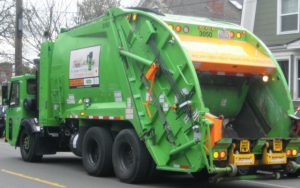This autumn, after years of dropping view-amassing videos of Spot the robot dog fending off stick-wielding humans and opening doors for its pals, Boston Dynamics finally announced that the machine was hitting the market—for a select few early adopters, at least. BD’s people would be the first to tell you that they don’t fully know what the hypnotically agile robot will be best at. Things like patrolling job sites, sure. But Spot is so different than robots that have come before it that company execs are in part relying on customers to demonstrate how the machine might actually be useful.
And now, after a few months on the job, Spot is beginning to show how it’ll fit in the workforce. BD’s researchers have kept close tabs on the 75 or so Spots now working at places like construction companies and mining outfits. (Oh, and one’s with MythBuster Adam Savage for the next year.) They’re seeing hints of a new kind of cooperation between humans and machines, and even machines and other machines. And starting today, you can even customize Spot to your liking—the software development kit is now publicly available on GitHub. Robot not included, though.
As an example of how Spot can help, says Michael Perry, VP of business development at BD, the mining industry now employs self-driving subterranean vehicles. But if something goes awry, like a sensor malfunctions or a truck gets hung up on a rock, the operation has to shut down so a human worker can safely troubleshoot the problem. But with Spot, early adopters found, the human operator can stay at a safe distance, seeing through Spot’s eyes. “It’s kind of an interesting cognitive leap to start thinking about robots mending and minding other robots,” says Perry. “It’s a little far-fetched and it’ll be interesting to see how successful these customers are with that application, but it was certainly something that I was really surprised by.” It’s the old robotics mantra dirty, dangerous, and dull in action: Advanced robots like Spot can tackle jobs humans can’t. (Or shouldn’t, really, unless you enjoy venturing into mines to get autonomous vehicles out of subterranean trouble.)
But there remains much that Spot can’t do. BD, for instance, hasn’t yet deployed the arm that allows the robot to open doors—that’ll come later this year—so Spot can’t fix a problem it might find with an autonomous mining truck. And the company has to confront the very magic that made it famous. A running criticism is that by viralizing slick videos of their robots pulling off amazing feats (a humanoid robot doing backflips, anyone?), they’re setting the public’s expectations too high. It takes a lot of work to get those tricks right, and what you’re not seeing are the many times the robots fail.
So BD’s researchers and execs have had to sit down with each prospective early adopter and talk through what their needs are, and what the robot can and can’t do for them—or whether they even need such an advanced platform in the first place. “We really try to work with customers and our own internal expectations to make sure that we’re not tackling a sensing task that, if you just installed a bunch of Nest cameras, you’d have the same result,” says Perry.
At the same time, BD is trying to make Spot a flexible platform, so early adopters can tailor the robot to fit their needs—think of it more like Android than iOS. That’s where the newly downloadable SDK comes in, allowing operators to program new behaviors. For example, if Spot is working a construction site, a project manager might want it to recognize and photograph certain objects. The SDK allows them to connect Spot’s cameras to computer vision models running either onboard the robot or in the cloud. Once they set Spot’s path by joysticking it around so it can remember the route, then they can let Spot autonomously roam the site, doing the work of a human who’d have to wander around doing the same.
Where it gets tricky is figuring out how customizable to make such an advanced machine. Higher-level customization—getting Spot to recognize certain objects or walk certain routes—is one thing. But BD isn’t particularly interested in letting clients toy with how the robot’s joints work in concert to produce that famous agility. “We’re assuming that our customers believe that we’ve got that problem solved,” says Perry. “It’s not how it gets from point A to B. It’s that it gets from point A to B while doing something that I care about.”
By making the SDK public, BD is opening up a platform to coders and roboticists of diverse specialties. “Developers will still need to become part of the early adopter program to lease the robot to execute their code,” says Perry, “but all interested parties will now be able to view the SDK and existing early adopters can open source their own code.” BD is also announcing today that it’ll be putting on a developer conference in Boston in May.
And as those machines grow more capable, BD itself is transitioning: Longtime boss Marc Raibert is moving from CEO to chairman, with Robert Playter, the company’s COO, taking his place. “This is partly a transition away from us being a research-only shop to a company that’s fielding commercial products,” says Perry. “So [Raibert] is still setting higher-level vision for pushing forward the envelope on robotics development at Boston Dynamics.”
But with increasingly advanced robots like Spot come increasingly sticky PR problems: From politicians and economists we’re getting dire warnings about how the machines will replace humans in the workforce. It’s true that as robots have gotten better at sensing the world, they’ve been freed from factory floors, where they worked in isolation from humans. And as they get better at navigating our world—be it as self-driving trucks or delivery robots—the concern is they’ll muscle people out of jobs.
But simply put, the outside world is awful for robots. Even humans fall down in the snow, and humanoid robots have nowhere near our stability. Wheels may gain you some traction, but then stairs confound you. The world outside an orderly factory is unpredictable and treacherous, even for as nimble a machine as Spot. Humans still need to hold Spot’s paw—it can only autonomously navigate an environment after you show it around. It still can’t manipulate objects. And you have to swap out its battery if you want continuous operation.



